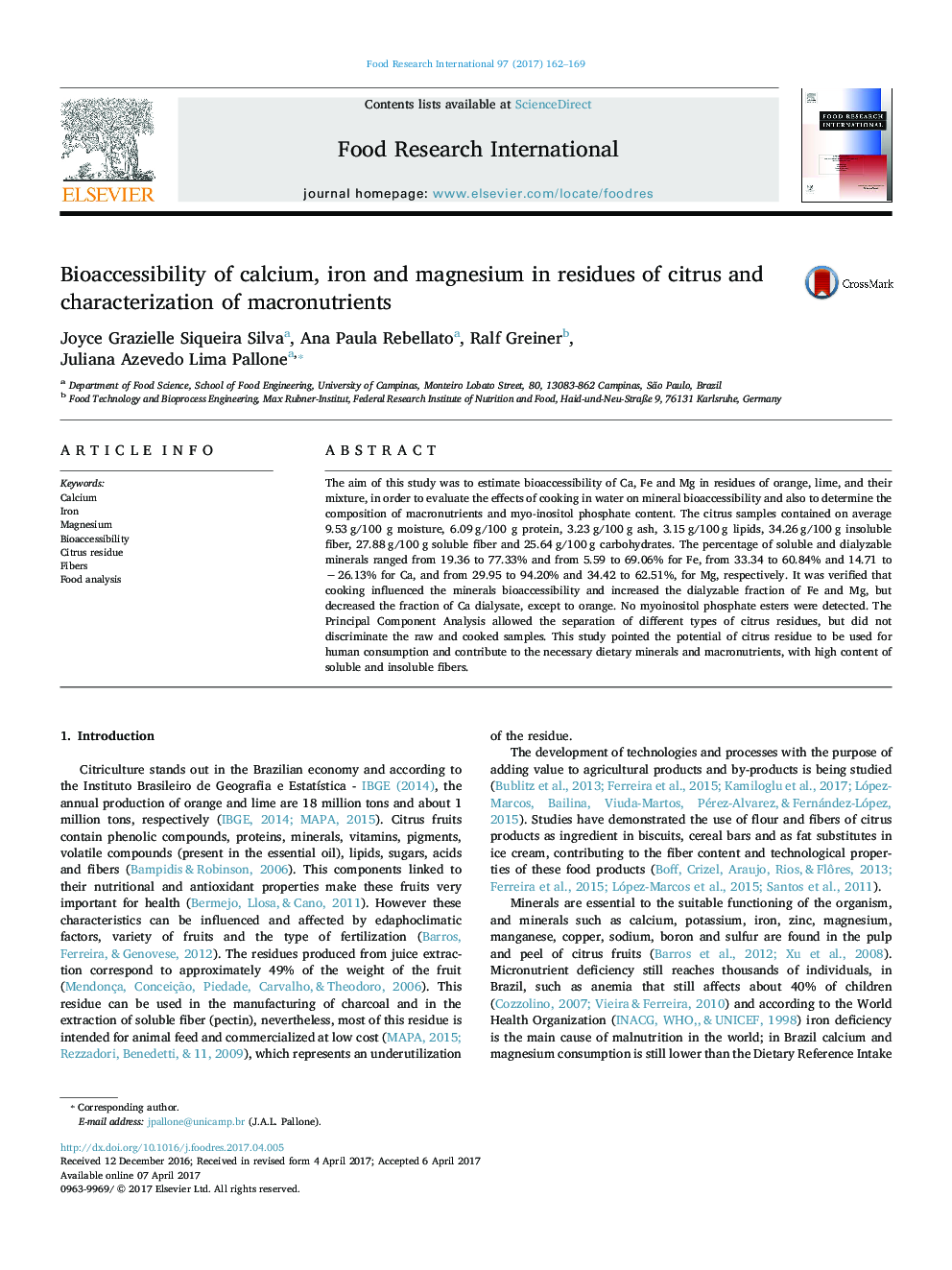| کد مقاله | کد نشریه | سال انتشار | مقاله انگلیسی | نسخه تمام متن |
|---|---|---|---|---|
| 5768219 | 1628453 | 2017 | 8 صفحه PDF | دانلود رایگان |
- Evaluation of Ca, Fe and Mg bioaccessibility, in citrus residues, by solubility and dialysis methods.
- The citrus residues present high fiber content.
- Mg is the most bioaccessible mineral in citrus residues, followed by Fe, and Ca.
- The high content of fibers decreases the bioaccessibility of the minerals.
- No competition is observed between Ca2Â + and Fe2Â + in relation to bioaccessibility.
The aim of this study was to estimate bioaccessibility of Ca, Fe and Mg in residues of orange, lime, and their mixture, in order to evaluate the effects of cooking in water on mineral bioaccessibility and also to determine the composition of macronutrients and myo-inositol phosphate content. The citrus samples contained on average 9.53 g/100 g moisture, 6.09 g/100 g protein, 3.23 g/100 g ash, 3.15 g/100 g lipids, 34.26 g/100 g insoluble fiber, 27.88 g/100 g soluble fiber and 25.64 g/100 g carbohydrates. The percentage of soluble and dialyzable minerals ranged from 19.36 to 77.33% and from 5.59 to 69.06% for Fe, from 33.34 to 60.84% and 14.71 to â 26.13% for Ca, and from 29.95 to 94.20% and 34.42 to 62.51%, for Mg, respectively. It was verified that cooking influenced the minerals bioaccessibility and increased the dialyzable fraction of Fe and Mg, but decreased the fraction of Ca dialysate, except to orange. No myoinositol phosphate esters were detected. The Principal Component Analysis allowed the separation of different types of citrus residues, but did not discriminate the raw and cooked samples. This study pointed the potential of citrus residue to be used for human consumption and contribute to the necessary dietary minerals and macronutrients, with high content of soluble and insoluble fibers.
54
Journal: Food Research International - Volume 97, July 2017, Pages 162-169
